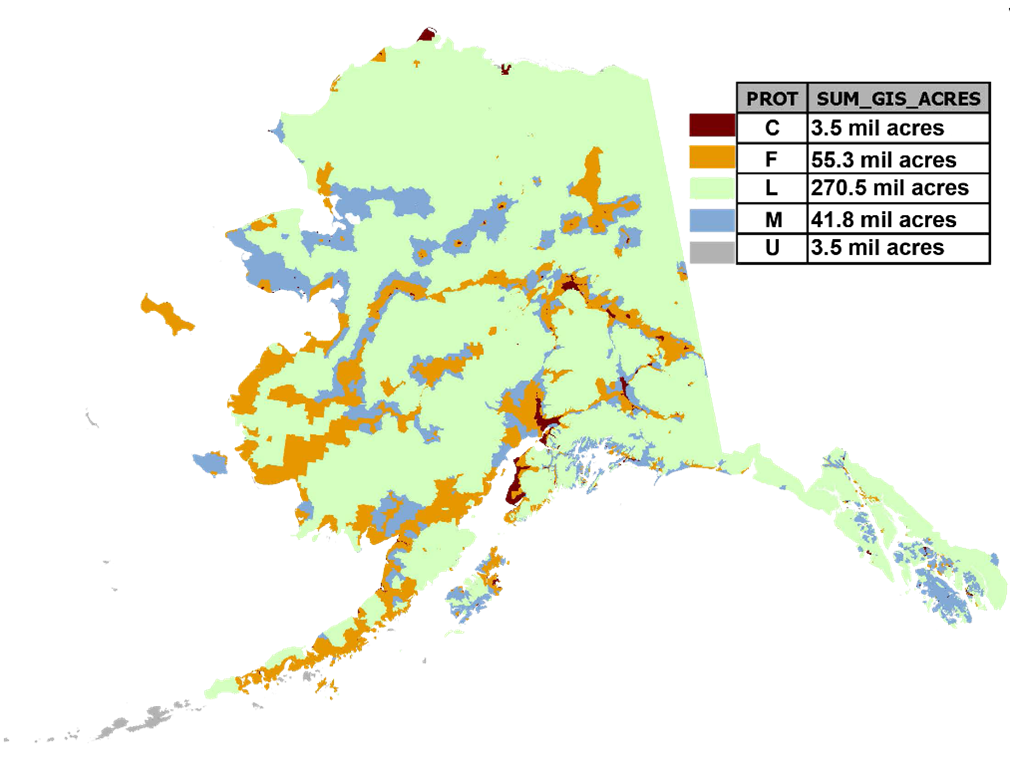
Granite Creek Fire, near Delta Junction, Alaska
Role of Fire in the Alaskan Environment
Fire has been a natural force in the Alaskan Interior for thousands of years. It is a key environmental factor in these cold-dominated ecosystems. Without fire, organic matter accumulates, the permafrost table rises, and ecosystem productivity declines. Vegetation communities become much less diverse and their value as wildlife habitat decreases. Even some of the plant and animal species normally associated with later successional stages will find the environment unsuitable.
Fire rejuvenates these ecosystems. It removes some of the insulating organic matter and results in a warming of the soil. Nutrients are added both by ash from the fire and increased decomposition rates. Vegetative re-growth quickly occurs and the cycle begins again.
An occasional fire may be critical for maintaining the viability of northern ecosystems, yet fire can also be a threat to human life and property. The realization that fire plays an essential ecological role, but also has a destructive potential in relation to human life and structures, can make the fire management decision process very difficult.
Fire Management Options in Alaska

Protection strategy options in the Alaska Interagency Fire Management Plan provide for a full range of suppression responses from aggressive control and extinguishment to surveillance. Firefighter and public safety is the of the highest priority for all options. The state is divided into four categories of protection: critical, full, modified, and limited. These management options are determined by the land manager and are re-evaluated annually. Wildland fire managers prioritize their initial response to new fires based on these pre-determined options and the firefighting resources currently available. While management options drive initial response, fires are assessed as they continue to develop and subsequent decisions about strategy and resource allocation are made based on the current situation regardless of management option.
Critical - The highest priority for suppression actions. Lands in wildland urban interface and other densely populated areas where there is an immediate threat to human life, primary residences, inhabited property, community-dependent infrastructure, and structural resources designated as National Historic Landmarks should be considered for the Critical Management Option. This classification is applicable to an entire village or town as well as a single inhabited structure. 3.5 million acres
Full - High priority but below critical. Provides for protection of moderately populated areas, cultural and paleontological sites, developed recreational facilities, physical developments, administrative sites and cabins, structures, high-value natural resources, and other high-value areas. This classification is applicable to broad areas as well as specific sites. 55.3 million acres
Modified - Modified allows for a response to wildfire that tailors the initial action to the time of year that the fire starts. It provides for an initial response designed to protect identified sites or areas similar to the full protection option early in the season when the probability is high that they will eventually be affected; but later in the year, after the conversion date, is treated similar to the limited option, allowing fire-related land use and resource objectives to be accomplished in a cost-effective manner while still providing appropriate levels of site protection. 41.8 million acres
Limited - The lowest priority for fire-related resource allocations. Designed for broad, landscape-scale areas where the low density and wide distribution of values to be protected best allows for fire to function in its natural ecological role. 270.5 million acres
Unplanned - No fire management option is assigned. 3.5 million acres
